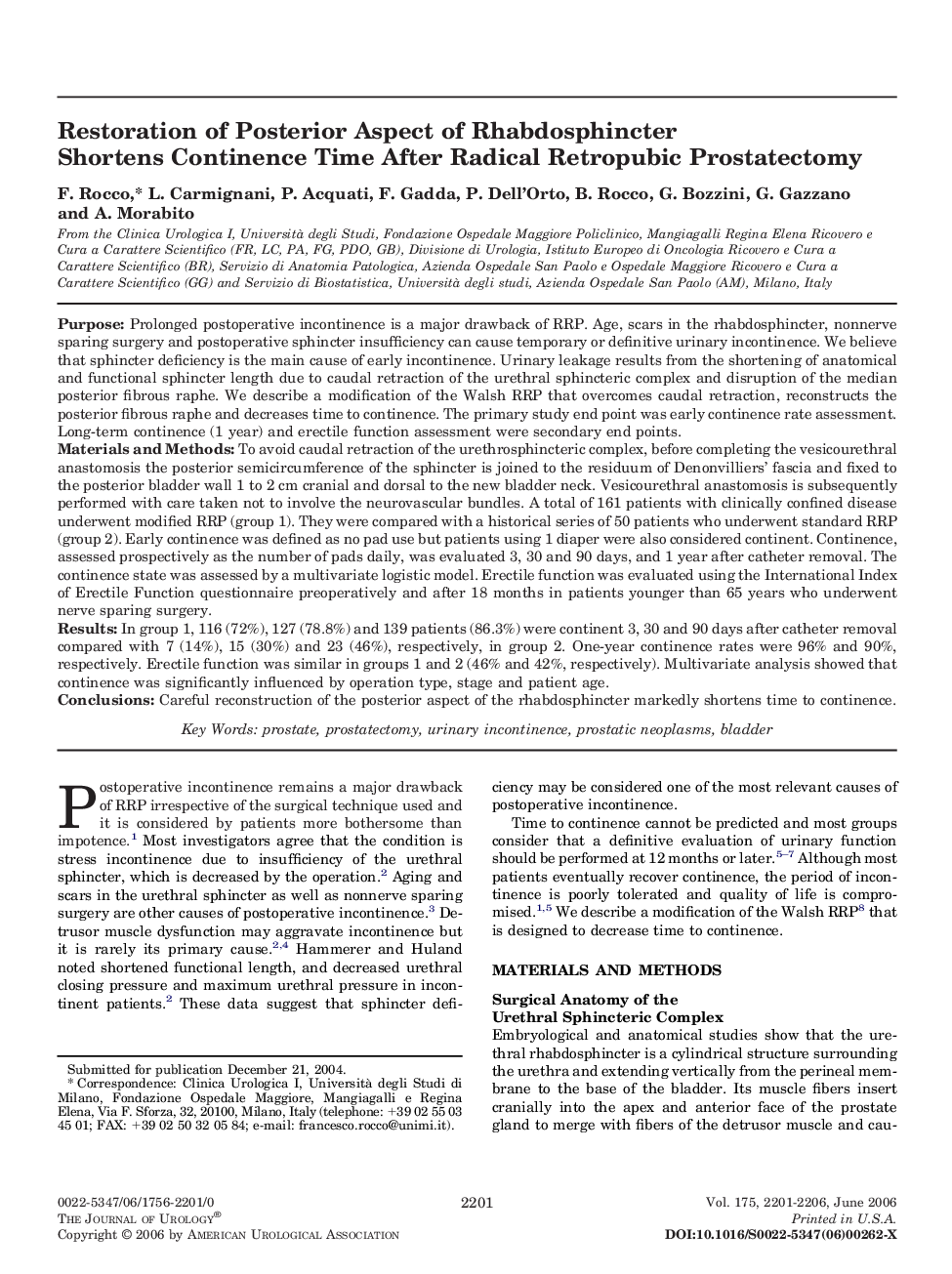| کد مقاله | کد نشریه | سال انتشار | مقاله انگلیسی | نسخه تمام متن |
|---|---|---|---|---|
| 3876400 | 1599023 | 2006 | 6 صفحه PDF | دانلود رایگان |

PurposeProlonged postoperative incontinence is a major drawback of RRP. Age, scars in the rhabdosphincter, nonnerve sparing surgery and postoperative sphincter insufficiency can cause temporary or definitive urinary incontinence. We believe that sphincter deficiency is the main cause of early incontinence. Urinary leakage results from the shortening of anatomical and functional sphincter length due to caudal retraction of the urethral sphincteric complex and disruption of the median posterior fibrous raphe. We describe a modification of the Walsh RRP that overcomes caudal retraction, reconstructs the posterior fibrous raphe and decreases time to continence. The primary study end point was early continence rate assessment. Long-term continence (1 year) and erectile function assessment were secondary end points.Materials and MethodsTo avoid caudal retraction of the urethrosphincteric complex, before completing the vesicourethral anastomosis the posterior semicircumference of the sphincter is joined to the residuum of Denonvilliers’ fascia and fixed to the posterior bladder wall 1 to 2 cm cranial and dorsal to the new bladder neck. Vesicourethral anastomosis is subsequently performed with care taken not to involve the neurovascular bundles. A total of 161 patients with clinically confined disease underwent modified RRP (group 1). They were compared with a historical series of 50 patients who underwent standard RRP (group 2). Early continence was defined as no pad use but patients using 1 diaper were also considered continent. Continence, assessed prospectively as the number of pads daily, was evaluated 3, 30 and 90 days, and 1 year after catheter removal. The continence state was assessed by a multivariate logistic model. Erectile function was evaluated using the International Index of Erectile Function questionnaire preoperatively and after 18 months in patients younger than 65 years who underwent nerve sparing surgery.ResultsIn group 1, 116 (72%), 127 (78.8%) and 139 patients (86.3%) were continent 3, 30 and 90 days after catheter removal compared with 7 (14%), 15 (30%) and 23 (46%), respectively, in group 2. One-year continence rates were 96% and 90%, respectively. Erectile function was similar in groups 1 and 2 (46% and 42%, respectively). Multivariate analysis showed that continence was significantly influenced by operation type, stage and patient age.ConclusionsCareful reconstruction of the posterior aspect of the rhabdosphincter markedly shortens time to continence.
Journal: The Journal of Urology - Volume 175, Issue 6, June 2006, Pages 2201–2206